Canon C300 Mark II: 4K Cinema Camera In-Depth-Review
The C300 Mark II is Canon’s long awaited successor to the very popular C300 and we take a closer look on the new features and if the camera can hold up to it’s competitors.
Introducing the trusted
Nearly four years ago when the Canon EOS C300 came out, there was always the cry out for more than 8-bit for the MPEG2-LongGOP codec.
It prooved that the 8-bit LongGOP 50mbit codec was more than sufficient bringing out very good quality for broadcast and even for the big screen.
The camera was hugely popular and still is loved by many cameramen.
Now the long awaited successor, the Canon EOS-C300 Mark II came out. But again with some outcry. Why is the new C300 Mk II so weak in high speed frame rates? As a matter of fact the successor of the C300 can record 120fps but only in 2K or HD. Can it hold it’s quality level? We find out a bit later.
I review this camera from an operators point of view with my personal opinion how this camera feels on daily work. This is by far not a complete review, it is my personal opinion how this camera holds up to my nitpicking image quality levels and in all the aspects mentioned in this review. One last thing to mention: every camera test is different, every tester has different priorities and even techniques to test cameras, my approach is to see what kind of complete usable package I get with this camera system, not only one aspect like only dynamic range or only sharpness or colors, no, I want to see the whole package. And one of the most important ones is usability and handling of the camera.
This review is by far not complete, there will be additional tests of the camera like comparing Gammas, Noise Test, Sharpness Test, Greenscreen Test and a Tips & Tricks part. So stay tuned, there is a lot to come in the next few weeks.
OK, so let’s take a look at the C300 Mark II and it’s features.
With a cinema-style camera like the new Canon C300 MkII Canon want’s to direct this camera directly to cinema and high-end corporate productions to compete against manufacturers like Arri, but with much lower cost.
This is the newest member of the Canon Cinema EOS line and while the older C300 was the first in this category, now the C300 Mark II has grown up to be a real cinema camera.
The concept is to keep the form factor but add all the things need for professional productions like a better codec, higher resolutions better color science in a very reliable package. The C300 Mark II is very similar to the original C300, but also a complete new camera with completely new features like higher resolution, higher framerates, far better codec and a ton of convienience-feature which makes life of a Director of Photography a lot easier and a director or client much happier.
The new 4K sensor features a Dual DIGIC DV 5 processor with 4K Bayer Pattern in a native resolution of 4096×2160 pixels and a new Dual-Pixel CMOS AF with an expanded focusing area and with fancy new focusing guides – more on that later.
Body, built quality and ergonomics
The body looks very similar to the older C300 with the biggest changes going to the redesign of the top-handle-grip which has strengths and weaknesses: the handgrip is attached via a u-form-like cheeseplate to the body via Allen screws which makes it very sturdy but also a bit more time consuming mounting it off the body. The good thing is that the top-handle has ten (10!) 1/3″ mounting points and one 3/8″ mounting point which allow you to attach accessories on many positions to the very stirdy top handle.
Canon increased the size of the body slightly without changing it’s general footprint. The body is longer at the rear and a bit wider, but even more stirdy than it’s predecessor because of a newly designed top handle, but with the cost of flexibility, because it’s mounted to the new cheese plate with two 1/4″ allen wrench screws and the cheese plate is mounted with three 1/4″ allen screws to the hot shoe and the body. Again, not a very sexy or fast solution but very stirdy and rock stable.
The new C300 MkII is a bit heavier than the older C300, but still portable enough to fit in thight places like cars, although it is not a real handheld camera like the C100 which is ay lighter, more likely on a steadicam or similar to have it movable.
The camera’s mount is a EF-Mount but can be interchanged to the EF-Cine-Lock-Mount and to the PL-Mount but only via a Certified Canon Service Provider.
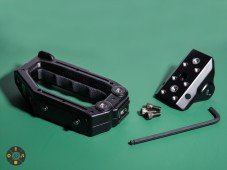 |
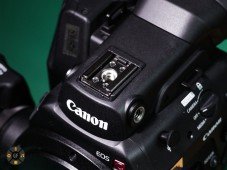 |
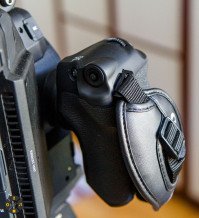 |
The handgrip on the right side is pretty much the same like the one from the older C300, with recording button, user assignable dial wheel and joystick navig button. Although it has the same lacking functionality quirk like the older C300, that the joystick button has no activation function like we have it on the C100. When you press it, nothing happens. On the C100 when you press it, you’re right in the quick settings for WB, ISO and Shutter. On the C300 (MkII) you have to press Func on the back of the camera, after that you can use the joystick on the handgrip to navigatie through WB, Shutter and ISO and than you can press the joystick button to confirm the settings (and for menu navigation). That is a minor quirk which the older C300 had and it is still present in the new Mark II.
The monitor unit now has two seperate cables that attaches to the corresponding monitor video and audio sockets on the camera. There are longer 100cm cables available as option, which is a nice to have. Alltough I found the cables (standard 50cm variants) stand out too wide, forming a loop which has to be tied to the handgrip via velcro, which I personally do not find so sexy, but it works.
The viewfinder is a 1.77 Megapixel Color OLED EVF With Adjustable 60° Tilt Angle with a eye sensor that enables the display and helps lifetime for the OLED display. The display is bright and sharp and very nice to focus and is customizable like the LCD monitor.
Operating the C300 Mark II
The camera is easy to use and very intuitiv. You got the instant feeling of beeing home if you are a Canon C300 or C100 user.
All important functions can be found with dedicated buttons on the left side, ND Filter, Magnification, Peaking, Zebra and Waveform-Monitor and ISO, Shutter and the new S&F Framerate button and also the White balance and the left side record button can be illuminated with a single button press that also illuminates the rear lcd info screen with a subtle orange background light and you can customize nearly all buttons to other functions.
Like the older C300, the Mark II has 2 jog dial wheels on the left side. The one with the button in the middle is for choosing and selecting menu items and other selections and the one below it is user assignable and I found it most usefull with ISO values assigned to it.
Recording buttons are on the lower left, the handgrip and on the monitoring unit on the top handle. Buttons have nice tactile feedback but are silent when pressed which is also a nice improvement from the older C300. There are three record buttons. On the handgrip, on the top-handle monitoring unit and the third one changed it’s place from the front-right to the left side of the body where the majority of the buttons are. The recording buttons do have a longer button movement when pressed to prevent accidently presses.
The built in ND Filters stopping down to 2, 4 and 6 stops and you can expand that range to the new 8 and 10 stop ND Filters which helps tremendously in bright sunlight scenarios.
Menues are mostly the same, with newly added features and a changed Picture Styles menu which does not have a dedicated button anymore (I used button #10 – Push Button Iris, to act as Custom Picture Style Menu button).
For finetuning and setting up own Custom Pictuer Styles, the C300 Mark II features a punch of industry standard Gamma Curves and Color Gamuts from which the camera operator can choose. There are three main categories of settings for image style settings now. More about Custom Picture Settings in chapter Image Quality and Custum Picture Style Settings.
The customizable My Menu settings are switchable in three slots for three camera operators have their favorite menu functions on hand quickly.
The built in cooling fan is slightly audible even when set to automatic/low, but stops and is silent as soon as you hit the recording button.
Autofocus is one of the major improvements of the C300 Mark II. There are three different modes: One Shot, Continous and AF-Boosted MF which is most interessting one.
Boosted Manual Focus means you switch your lens to autofocus (if capable of AF) but keep focusing manually as usual, as soon as the focus in the AF-area-box hits a surface which becomes sharp, the Autofocus takes over and adjusts the sharpness if it’s not 100% perfect in focus. This feature works really well, depending on the precision of the autofocus system of the lens.
We’ve tested a punch of Canon and Sigma photo lenses with this kind of Autofocus and they all worked great.
An additional focusing help is the Focus Guide which helps focusing even with non-autofucus lenses like primes.
While focusing manually two “wings” on top or below the focusing area rotating towards until they align, when in focus.
If the “wings” are ontop of the focusing rectangle, the focus is to far, if they are below, the focus is too near.
As you already guessed, the Focus Guide can be freely moved around the the subject you want to focus at and as a bonus it even tracks faces automatically if Face-Tracking is enabled.
The camera also features a Single Frame Recording Mode for e.g. Stop Motion or Animation and an Intervall Recording Mode for Timelapse Recording with intervals ranging from 1 second to 10 minutes.
A nice addition is the Proxy Video recording to the SD Card slot. When activated, the camera records for example 4K material to the CFast card and the same material simultanously in HD to the SD Card slot, with or without baked-in LUT as a proxy video. But the quality is in no ways “proxy-bad”, the 24mbit 4:2:0 LongGOP MXF has at least Canon C100 MkII quality.
Image Quality and Custum Picture Style Settings
The new 8.85 MegaPixel Bayer Pattern CMOS sensor with a Digit 5 Dual Signal Processor the camera delivers a maximum resolution of 4096×2160 pixels in 10-bit 4:2:2 or 2048×1080 pixels or 1920×1080 pixels with either 10-bit 4:2:2 or 12-bit 4:4:4 which should serve for many different filming situation.
The 4K resolution is achieved via special lattice transform fill-in-type interpolation which helps produce a sharp 4K image even dough the sensor has “only” 4K resolution. The image processing seems to do a good job when looking at the images and sharpness is close to 2000 lines per picture height with the tested Sigma 18-35mm f1.8.


[/before-after]
clog2 appears a bit softer than clog.
Download the Download Canon Log 2 resolution chart
Download the Download Canon Log resolution chart
ISO Sensitivity
ISO ranges from 160 to 25600 and when in ISO Expansion even up to ISO 102400. Noise behaviour is pretty nice aside from the Canon Log 2 noise behaviour described below.
Noise behaviour with different gammas from ISO 100 to 102400
head over to Vimeo to download 80mbit UHD 4K version
 |
 |
Canon’s effort went into high quality image processing to get best possible quality of the new C300 Mark II. Can it hold up to the competitors? The new color science should help creating stuning imagery, Gamma/Gammut and Color Matrix settings can be combined in any way to achieve the look needed for a project. And the newly developed ACES workflow assures a high quality standard throughout the whole production from filming to transfer, post-pro and mastering.
Unfortunately Canon desided not to implement 60p for 4K, only for 2K or HD, in favor of higher image quality and a artifact free image. This camera is made for quality first and not so much on performance with high speed material, that often degrades with other camera brands.
Like many Canon cameras, when sharpness is lowered to -10, the sensor delivers the sharpest image because you just turn down the standard sharpening behaviour that is used by default. Image sharpen set to 0 increases perceptual sharpness but can also introduce sharpening artifacts like double edges and increase moire and image noise.
With pre-defined presets like Canon Log 2:BT.2020, Canon Log, BT.2020, BT.709, etc. the camera operator can easily set a fixed look or disable presets and set all parameters to the needs of the operator.
New Categories for Image Style Settings
- Gamma: Canon Log 2, Canon Log, WideDR, EOS Standard, Normal 1 (Standard), Normal 2 (x4.0), Normal 3 (BT.709), Normal 4 (x5.0)
- Colorspace: Cinema Gamut, BT.2020 Gamut, DCI-P3 Gamut, BT.709 Gamut
- Matrix: Neutral, Production Camera, Cinema EOS Original, Video, EOS Standard, Off
With these three freely selectable main categories you can combine the look to 192 different look combinations, alone for the main settings, not counting the detailed custom picture style configuration parameters the operator has available within the Other Settings menu category.
If you want to shoot alongside with an Arri Alexa with Arri Log-C, the settings for the Canon C300MkII would be Gamma: Canon Log 2, Colorspace: Cinema Gammut, Matrix: Production Camera. These settings would match an Arri Alexa pretty close. In PremiereCC you can use the LUT Arri SL as a grading starting point.
LUT
When using Canon Log2 gamma the camera operator can choose BT.709 as display LUT, but no display LUT is available when choosing Canon Log gamma. The C300 Mark II cannot load custom LUTs.
When using external monitoring via SDI or HDMI, the camera can output the image with a display LUT. Available LUTs are: DCI, BT.2020 or BT.709.
Image style options available with various Gammas
| GAMMA | Black | Black Gamma | Low Key Sat | Knee | Sharpness | Noise Reduction | Skin Detail | Selective NR | Color Matrix Tuning | White Balance | Color Correction | Other Functions |
| Canon Log 2 | – | – | yes | – | yes | yes | yes | yes | yes | yes | yes | yes (Setup Level: No) |
| Canon Log | – | – | yes | – | yes | yes | yes | yes | yes | yes | yes | yes (Setup Level: No) |
| WideDR | yes | – | yes | – | yes | yes | yes | yes | yes | yes | yes | yes |
| EOS Standard | yes | yes | yes | – | yes | yes | yes | yes | yes | yes | yes | yes |
| Normal 1 | yes | yes | yes | yes | yes | yes | yes | yes | yes | yes | yes | yes |
| Normal 2 | yes | yes | yes | yes | yes | yes | yes | yes | yes | yes | yes | yes |
| Normal 3 | yes | yes | yes | yes | yes | yes | yes | yes | yes | yes | yes | yes |
| Normal 4 | yes | yes | yes | yes | yes | yes | yes | yes | yes | yes | yes | yes |
Canon Log 2 Noise
Although there are two issues with Canon Log 2: NOISE. Canon Log 2 streches the dynamics of the sensor so much to achieve the 14 or 15 stops of dynamic range, it introduces a bit more noise than normal even at ISO 800 and it gets more when ISO’s are higher. Noise is better at at ISO 400, but at the cost of one stop dynamic range.
This noise behaviour seems to be normal for such a flat gamma curve and appears to be stronger in the shadows that mostly dissapear if graded correctly. Canon has gone this way to not use noise reduction in the blacks like Arri does with the Alexa and the Amira.
[before-after viewer_position=”center” label_one=”original clog2″ label_two=”graded clog2″ overlay_opacity=”0″]

[/before-after]
Noise behavoir with Canon-Log2
Download the ungraded full-size still image
The noise is most evident if no grading or LUT is applied. When graded correctly, most if not all the noise is gone, because it is strongest in the blacks.
All other Gammas do not have this issue, not even the original Canon Log. Enabling in-camera noise reduction is generally a bad idea, because it softens the image and reduces resolution drastically.
Unfortunately noise is also more visible when choosing WideDR Gamma, the same as is was with the C100 and the older C300.
Canon Log 2 Video Levels
The second issue with Canon Log 2: the video levels are strangely lowered and capped to about IRE 93-94, so when you overexpose your image and look at the waveform monitor you see brightness capped at around IRE 93. You never reach 100% brightness when looking at the waveform.
This is a bit of a problem because when you look at the waveform monitor or the zebra for exposure you end up in an incorrect exposed image. In order to see if you are overexposing your image, Zebra2 must be set to 90% and if you exposure hits IRE 90, you know your image is overexposed.
This behaviour is only when choosing Canon Log 2, all other Gammas have normal video levels. This behaviour does not have any image quality impact, it is just the brightness that is shown different compared to the other gammas available in the camera.


[/before-after]
The older Canon Log Gamma has been greatly improoved. It has has much less noise than on the original C300 but also almost a great dynamic range as the new Canon Log 2. Improved signal processing and the better sensor of the C300 Mark II boosted the original Canon Log gamma to nearly 14 stops of dynamic range which is the great surprise.
Our measurements turned out that Canon Log slightly over 3.5 stops before it’s clipping and underexposed about 10 distinguishable stops. Canon Log 2 dynamic range has about 2/3 stops more latitude in the highlights and 1/3 stop more in the shadows. Resulting in close to 15 stops latitude for Canon Log 2.
Unfortunately when using Canon Log 2 or Canon Log the black levels and gain-level (or white level) can not be changed (as seen in the table above) which prevents from to much fiddling around and Canon decides to fix that settings for a more consitent gamma representation when using presets for different grading applications, which on the other hand helps editors getting a faster grade on the material.
[before-after viewer_position=”center” label_one=”original clog2″ label_two=”graded clog2″ overlay_opacity=”0″]

[/before-after]
Download original image (3840×2160) / graded image (3840×2160)
The above original vs graded image is based on Canon Log 2 Gamma, Color Space set to Cinema Gamut and Color Matrix set to Neutral. Zebra1 was set to 80% and skin was exposed to just under IRE 80 with the zebra1, that way Canon Log 2 is exposed properly. Canon Log 2 skin can be exposed between IRE 75-85. This exposure level is a good starting point to get correct images out of Canon Log 2.
The material needs two steps of treatment, firstly the gamma, gain and saturation is corrected so the image apears at “normal” levels. This was the “technical” correction, which could also be corrected via LUT, but I corrected it by hand to have more control on the image.
The second step is the grading look. In this case the look I was going is a Eastman 5247 1980’s filmstock look, which just adds even more contrast, a bit warmer colors and a little more magenta. This is just a very basic example how Canon Log 2 can be treated to produce very nice cinematic look with it. BTW, the material was treated in Adobe Speedgrade CC 2015.
If the production does not need grading, because it needs a very quick turnaround, there are plenty of options to set the image-look to a Custom Picture Profile that looks great of of the box like WideDR, Norm 1, Norm 2, Norm 3, Norm 4.
Monitoring Unit
The 4 inch lcd screen on the top handle looks pretty much the same as of the older C300, with 1.2 million dots resolution (same as older C300). The monitor can be rotated 270° and flipped down to get a good view in many filming positions like it’s older predecessor.
For a cleaner display, the icons and infos overlapping the image can put on the side of the screen with the Display function button to provide a distraction free filming.
There are focus assistant functions like peaking, magnification and the all new Focus Guide. Unfortunately magnification turns off when you hit record. But the new Focus Guide is a real help and even works while tracking faces if face detection is enabled.
The camera operator can choose either to monitor via the built in monitor, the oled viewfinder or an external monitor via hdmi or sdi-monitor out and can customize what OSD information should be visible on screen.
Recording Formats, Resolutions and Media
The most anticipated new feature of the C300 Mark II is undoubtedly 4K recording in UHD 3840×2160 and DCI Cinema 4096×2160 with 10-bit 4:2:2 Subsampling with framerates at 23.976, 24, 25 and 29.97.
With 2K/HD at 2048×1080 or 1920×1080 the camera is able to record 12-bit 4:4:4 which is perfectly for effects shoots like chroma keying. The edges of key are perfect without any artifacts with a good greenscreen or bluescreen, although chroma-keying is working wonderfull at 4K 10-bit too and even more detailed with only minimal artifacting to the key.
On the back are two CFast v2.0 Card slots which can also be used for simultaneous dual slot or relay recording. The CFast Cards are still pretty expensive because it uses a new SATA high-speed interface and memory technology which delivers more than 600MByte/s transfer speed.
CFast cards are already beeing used with the Arri Amira or Alexa Mini and the Canon XC10 among others.
The cards are pretty expensive at the moment (around $370 for 128GB), but prices going down pretty fast normally. For example the Transcent CFast v2.0 256GB is at a good pricepoint and working great with the C300 Mark II as long as it is CFast Version 2 and has a minimum writing speed of 600mbit per second.
Audio
Audio can be recorded as PCM 24bit or 16bit with a sampling rate of 48KHz to 4 mono channels.
When nothing is plugged into the 3.5mm Audio-in jack, proxy audio is always recorded from the internal mike in the camera body to channel 3 and 4.
The cameras preamps are very clean of noise and produce high quality sound with no issues at all. But I have not tested audio in great detail. On some projects I’ve recorded sound with an Sony wireless lavalier mike, everything was nice and clean.
Ports, Power and Connections
The Canon C300 Mk II features the usual range of ports, 3G-SDI port for recording Uncompressed 4:2:2, 4:4:4 or raw depending on the choosen format. Monitoring via SDI terminal port acn be 2K when recording 4K or HD and can output differen LUTs for on-set grading. The HDMI outputs only HD, not 4K or 2K. 3G-SDI outputs 4K raw or 2K, HD 4:4:4 12-bit or 4:2:2 10-bit.
We’ve tested the raw format with an Atomos Shogun external recorder that we connected via SDI which is the only way to get raw out of the camera, there is no raw coming out of HDMI. HDMI out on the C300 MkII is only 2K or HD, but not 4K.
We found that the conversion of the Atomos Shogun is nice, but not perfect. Because it is real raw coming out of the camera, the Shogun does also the debayering process, which the Shogun does not as good as the C300 MkII internaly. The Shogun’s material is a bit sharper, but also features more moire. So signal processing is way better when recorded internally. The Shogun does convert the raw format to ProRes 4K, not CinemaDNG at the moment, which would be even more interesting to see what quality comes out when output in DNG format.
Two XLR connectors are available on the monitoring panel at the top handle which also houses the switches for phantom power and the volume rockers for the two channels.
On the right front edge is the SDCard slot which is used with Proxy recording or storing additional Picture Profiles, above it is a 3.5mm line-in jack for two additional audio channels and on the back is a 3.5mm headphone jack for monitoring audio.
The third BNC jack is a genlock-in for timecode syncing with other cameras or timecode generators.
Canon also optionally provides an extra remote control device, the Canon RC-V100 which allows to control many functions of the camera wich is plugged into the remote port of the C300MkII. Unfortunately the Canon C300 MkII has no Wifi like the Canon XC10, only the cable remote.
Canon introduced a new battery series which now is rated at 14.4V and included an 3100mAh capacity battery, which last apx. 90-100 mins so better get some of the bigger 6200mAh batteries which lasts 180-210 mins. The camera is power hungry and that is also reflected by it’s bigger batteries.
Slow & Quick
The C300 Mark II features high speed recording at 2k and HD up to 120 fps in NTSC or 100 fps in PAL mode. The motion is quite nice and fluid, but with the downside of a bit softer image. Another factor is that at 100-120fps the camera records in a 2:1 crop mode, meaning it takes the inner portion of the sensor, not the entire sensor. So prepare to double the focal length of your lens when shooting highspeed at 100 fps or above and a tad softer image.
When recording high speed at 59.95 fps or lower, the full sensor is used without croping and do not suffer the soft image like at 100fps. With 51 or 61 fps or above (cropping needs to be enabled) the sensor samples four R-G-G-B-540p “lattice” photosites which are calculated to a 1080p image and thus the image is a bit softer than with 50p or 60p without sensor croping.
Framerates at 2K or HD can be set from 1 fps to 60fps (NTSC) or 50fps (PAL) in single steps from 1-30 and steps of two from 32-60 (NTSC) or 32-50 (PAL) and is recorded without audio.
Strengths of the C300 Mark II
- Beautiful colors and styles which can be modified with many gamma, gammut and matrix settings
- All Recording Modes Internal on CFast2.0 with new XF-AVC Codec up to 405mbit/s
- 4K (4096×2160) and UltraHD (3840×2160) 10-bit 4:2:2
- 2K and HD 12-bit 4:4:4 or 12-bit 4:2:2
- Variable framerate from 1-60fps in 2K/HD 4:2:2 10-bit
- Many focus assist options like Focus Guide, Boosted Manual Focus and Face Tracking
- Small footprint, versatile modularity
- many mounting points for accessories on the body and the top handle
- Exchangable EF-mount and PL-mount (via Canon service center)
- Over 2000 lines resolution sharp, artifact free image in 4K (EBU Tier 2 quality level)
- Nearly perfect image quality in HD (EBU Tier 1 quality level)
- Stirdy and reliable body design
Restrictions & Oddities
- grain in shadows when using C-Log2 at ISO 800 (although much less grain visible after graded properly)
- soft image at 100/120fps and 2:1 sensor crop
- 1/4″ allen screws for top handle instead of quick release knob
- Only one Expanded Focus magnification (2x)
- Focus magnification turns off when recording
- Everytime when choosing a different Gamut the LUT settings are disabled
- LUT only available with Canon Log 2, but not when choosing Canon Log
- No 4K or UHD available via HDMI out, only via SDI as RAW
- Waveform-monitor can not be repositioned
- Grip Joystick behaviour not like C100: we like the way the joystick is used with the C100, why not the same on the C300?
- missing EF-S Mode: could introduce vignetting on some wider EF-S lenses
Final Thoughts
There is no camera that serves all needs, there are always some downside. The Canon C300 Mark II shines in image quality with endless combination image style settings. Important industry standards like BT.2020, BT.709, different Wide-Gamut setups and Canon Log 2 gamma can be used for HDR video without a doubt.
Convienience, usability and handling is really great with the Mark II and it is joy to work with the camera, a very similar experience like with the C300 predecessor, with just minor quirks, like the disabled focus magnification while recording.
The weak aspect of this camera is the high speed performance, there are surely better ones, but a maximum of 120fps at 2K with 2:1 cropping is not so shabby at all, however 2K 60p is way sharper, with nearly perfect image quality but with great features like the Focus Guide or the the Boosted Manual Focus which helps shooters alot.
Who is it for? The Canon C300 Mark II is a camera intended for independent motion picture production, commercials, corporate and documentary shooting and more. The newest member of the Cinema EOS line is now a true grown up, professional cinema camera, a budget camera if you compare features and price to the higher end competitors.
The Canon C300 Mark II is a decent successor the older C300, finaly records 4K 10-bit or 2k/HD 4:4:4 12-bit all internally. The camera body had been greatly improved, is much more stirdy and feels even more reliabe than it’s predecessor, but therefore lacks a bit of flexibility regarding the top handle not having a quick release but instead a few allen-screws to mess with.
The camera’s price tag is ok, when you look at the high image quality, reliabiliy and built quality that the Mark II delivers.
The Canon C300 Mark II is just simply a high quality workhorse and the best Cinema Camera Canon ever created.
Inlcuded Accessories
- Top Handle and Monitoring Unit
- Hand Grip
- Double Charger
- BP-A30 Battery (14.4V 3100mAh)
- Power Adapter
- Two UN-5 Monitor unit cables (50cm)
- Printed Manual
Documents & Links
INFO: Example Clips Coming Soon
Canon C300 Mark II Features Overview (pdf)
Canon C300 Mark UU User Manual (pdf)
Canon Whitepapers & Detailed Technical Descriptions
Get the Canon C300 Mark II at your professional film equipment retailer for about €13.200 plus tax.


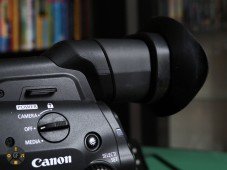
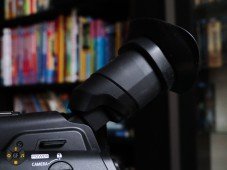
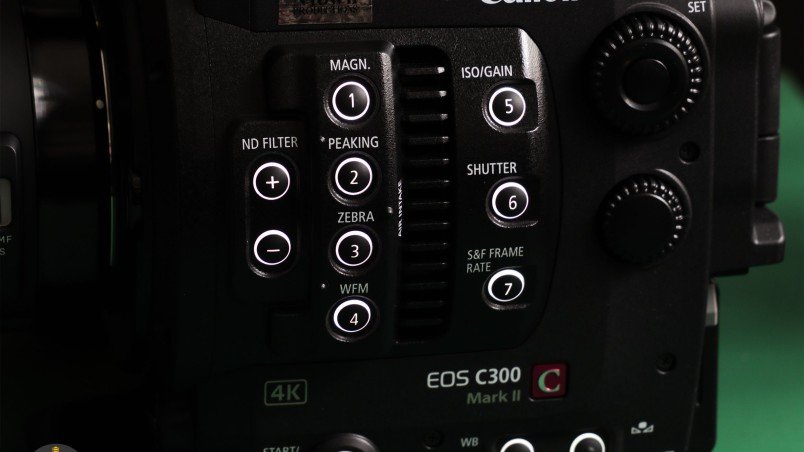
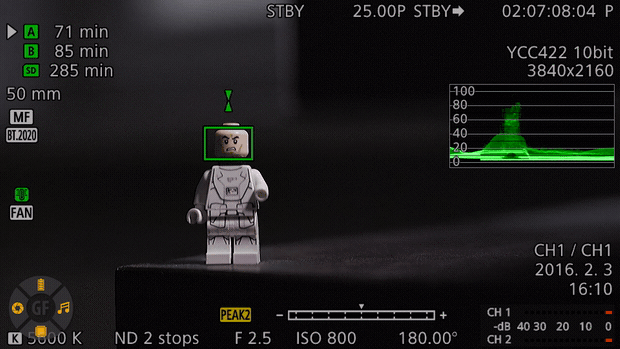
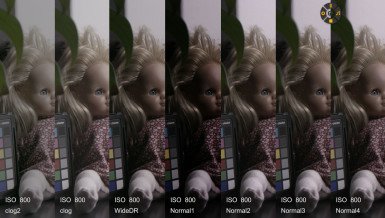
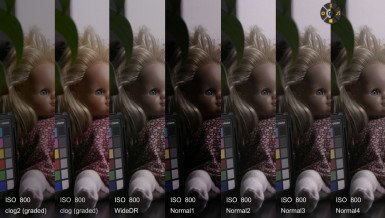
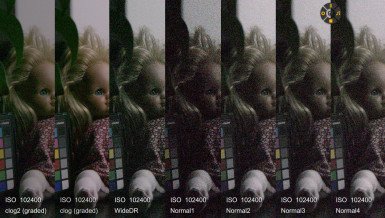
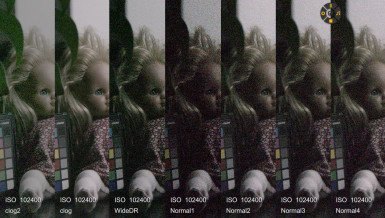



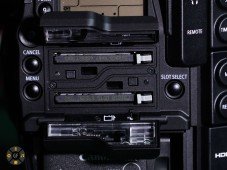


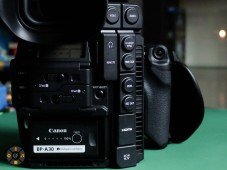
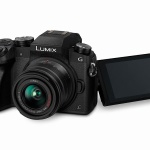
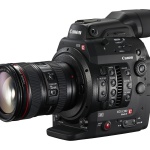
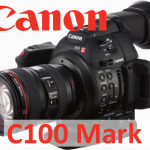
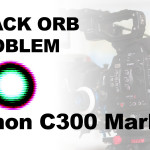
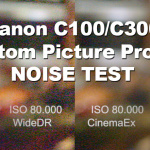
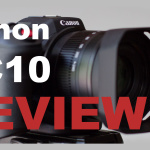

You must log in to post a comment.